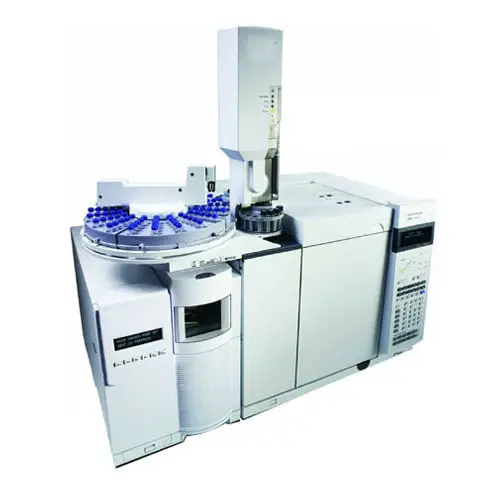

- A DIAGRAM OF A GAS CHROMATOGRAPH PORTABLE
- A DIAGRAM OF A GAS CHROMATOGRAPH SOFTWARE
- A DIAGRAM OF A GAS CHROMATOGRAPH PLUS
The number of theoretical plates increases with the increase in the column length therefore, chromatographers express the average performance of a column by reporting the number of theoretical plates per meter of column length. Additionally, temperature programming would vastly overestimate the values of plate numbers. (35) Typically, solutes with low values of retention factor exhibit higher plate numbers.

The number of theoretical plates is experimentally determined under isothermal conditions using a test solute with a retention factor more than 5. The narrower the peak width is, the greater is the plate number and separation efficiency.

The peak width determines the chromatographic efficiency, which is expressed in terms of the number of theoretical plates or plate number ( N). Ideally, the separation process results in the generation of a Gaussian-shaped peak. Additionally, extra column effects, such as injection pulse width and dead volumes, also contribute to the dispersion. Even identical solute molecules, owing to the randomness of different processes, reach the detector at different times leading to a distribution.
A DIAGRAM OF A GAS CHROMATOGRAPH SOFTWARE
A μGC comprises a number of components, including a source of carrier gas, preconcentrator-injector, separation column, detector, pump, valves, and software for instrument control, data acquisition, and analysis.Īs the components of a mixture move through a separation column, they undergo a number of processes, and hence the components exit the column at different times.
A DIAGRAM OF A GAS CHROMATOGRAPH PORTABLE
(19,25,26) Throughout this article, we use the term “micro gas chromatograph” (μGC) to refer any field portable versions of a GC comprising one or more microfabricated components.

Moreover, the use of the term “micro” is also not based on the type of column used, as miniature GC systems comprising conventional capillary columns are sometimes named as micro GCs.
A DIAGRAM OF A GAS CHROMATOGRAPH PLUS
For example, INFICON 3000 Micro GC (portable model) weighs 36.5 lb, Agilent 490 Micro GC (with 4 channels) weighs 23.4 lb, and Vernier Mini GC Plus (developed by Seacoast Science, Inc.) weighs 2.87 lb, indicating that the use of word “mini” or “micro” is not based on weights. (20−24) The nomenclature of these miniaturized GC-based devices is not clear-cut. There has been increased marketability of portable GC instruments, and these products are being developed in both research (5−19) and commercial laboratories (Table S1 in the Supporting Information). With an aim to develop compact, low power, and field portable GC instruments, considerable research has been conducted over the past 40 years. (4) Hence, these instruments are normally not field portable. While a conventional GC is a powerful and versatile tool, it is relatively bulky and requires high power with a typical peak power requirement of 2000–3000 V-ampere. Among a number of portable devices, a miniaturized version of gas chromatography (GC) system is a very promising technique for rapid and sensitive analysis of complex chemical mixtures.


 0 kommentar(er)
0 kommentar(er)
